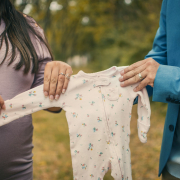Prospective Marriage Visa v Partner Visa
When it comes to immigration and settling down with your significant other in Australia, there are different visa options to consider depending on your circumstances. One of the main options that unmarried couples have to decide between is a Prospective Marriage (subclass 300) or a Partner Visa (offshore subclass 309/100, onshore 820/801).
Unlike many countries, Australia recognised de facto relationships. This means that even if you are not married, your relationship may be considered a de facto relationship when you are living together in an exclusive relationship with your partner.
Choosing the right visa is important to save on visa fees and the time processing applications take.
What are the differences between the Prospective Marriage Visa (subclass 300) and the Partner Visa (subclass 820 or 309)?
Prospective Marriage Visa (Subclass 300)
Overview
The Prospective Marriage Visa (subclass 300) is designed for individuals who are engaged to be married to an Australian citizen, permanent resident, or eligible New Zealand citizen.
This visa allows the visa holder to enter Australia and marry their partner within nine months of the visa’s grant.
Key Features
- Validity: This visa is valid for nine to fifteen months, giving the couple time to marry. Your exact time will depend on the visa grant letter.
- Work Rights: The visa holder is allowed to work while in Australia.
- Travel: The visa holder can travel freely in and out of Australia during the visa’s validity.
- Eligibility for Permanent Residency: Once married, the visa holder can apply for a Partner Visa (subclass 820/801 or 309/100) to stay permanently.
Requirements
- The couple must have a genuine intention to marry and live together as partners.
- Both individuals must be of legal marriageable age in both countries.
- A formal engagement is not mandatory, but there must be a plan to marry within nine months of visa grant.
- In most cases, you must have met your fiancée in person prior to applying.
Pros and Cons
- Pros: Faster processing times compared to Partner Visas, the ability to enter and work in Australia before marrying.
- Cons: The visa is temporary, requiring an additional application for permanent residency after marriage.
Partner Visa (Subclass 820 or 309)
Overview
The Partner Visa is suitable for individuals who are in a genuine and continuing relationship with an Australian citizen, permanent resident, or eligible New Zealand citizen.
The visa has two stages: a temporary visa (subclass 820 or 309) and a permanent visa (subclass 801 or 100).
Key Features
- Validity: The temporary visa allows the holder to live, work, and study in Australia while the application for permanent residency is processed.
- Travel: The visa holder can travel freely in and out of Australia during the temporary visa’s validity.
- Permanent Residency: If the relationship continues to meet the requirements, the visa holder can transition to permanent residency after a period of time.
Requirements
- The couple must be in a genuine and ongoing relationship, either as a de facto couple or married.
- Evidence of a shared life, mutual commitment, and exclusive relationship must be provided.
Pros and Cons
- Pros: The visa leads to permanent residency, providing stability and security for the couple.
- Cons:
- Longer processing times, requiring patience and continued commitment from the couple.
- The relationship threshold is higher than the subclass 300 visa and you must provide that you have a mutual commitment with your spouse to the exclusion of all others, your relationship is genuine and continuing and you either live together or don’t live permanently apart.
Conclusion
Choosing the right visa depends on your relationship status and long-term goals. The Prospective Marriage Visa (subclass 300) is a good option for couples planning to marry within nine months and who want to begin their life together in Australia sooner. The Partner Visa (subclass 820/309) is ideal for those who are already in a committed relationship and looking for permanent residency.
This comparison is a broad overview, and you must ensure that you meet all other eligibility criteria for both visas. Regardless of the path you choose, you must be sure that you meet the requirements and submit a thorough application.
Contact FC Lawyers today to help find the best path for you.











